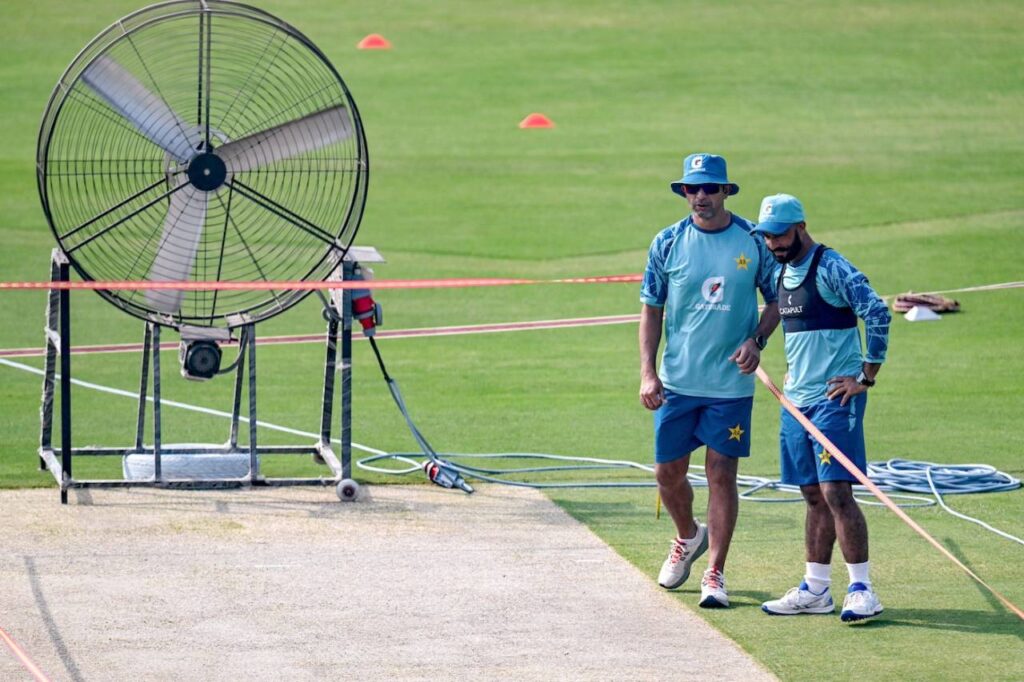In a bold move to create a spinning track for the final Test of the series against England, Pakistan’s groundstaff at Rawalpindi Cricket Stadium are employing industrial-sized fans, outdoor heaters, and windbreakers to expedite the drying process of the pitch.
After suffering a heavy defeat by an innings on a flat surface during the first Test in Multan, Pakistan made the unusual decision to use the same pitch for the second match. This gamble paid off as they won the toss and saw their spinners, Noman Ali and Sajid Khan, take all 20 wickets, dismissing England for a mere 144 in their final innings.
Historically, Rawalpindi has been known for producing some of the flattest pitches in Test cricket, providing little support for spin bowlers. However, the recent performance of Mehidy Hasan Miraz, who took 10 wickets for Bangladesh in their 2-0 series victory in Rawalpindi last month, has reignited hopes for a more favorable track for spinners. Since the venue resumed hosting Tests in 2019, spinners have averaged nearly 50 runs per wicket, compared to seam bowlers who have achieved a wicket every 34 runs, bolstered by a match against South Africa in January 2021.
Also Read: Babar Azam and Shaheen Afridi Likely to be Rested for Zimbabwe Tour
In that game, which offered assistance to seamers throughout, Shaheen Afridi and Hasan Ali combined to claim nine of South Africa’s ten wickets in the fourth innings, with eight coming on the final day. Traditionally, scores in Pindi Tests have ranged between 200 and 300, a benchmark the Pakistan Cricket Board (PCB) has previously deemed ideal.
However, the landscape has shifted. Following their 152-run win in the second Test, Pakistan’s captain Shan Masood expressed a desire for an atypical Rawalpindi pitch for the decisive encounter, which kicks off on Thursday. England, anticipating another spin-friendly surface, has their head coach Brendon McCullum predicting conditions that would be “the opposite of a green seamer.”
On Sunday, the groundstaff set up three large heaters and an industrial fan at each end of the pitch to blow hot air and assist in drying it out, while windbreaks were installed to retain the heat. When Pakistan’s players trained on Monday morning, only the fans remained in place, continuing to dry the surface under the afternoon sun.
Interestingly, the Test strip is one of only three that has been cut across the square, with the remaining two designated for practice on either side. In the previous Test in Multan, England’s seamers exploited a dry, abrasive square for reverse swing, but this week’s lush outfield and greener square may complicate similar tactics.
England opted not to train on Monday and remain open to surprises ahead of their session on Tuesday. Jack Leach, the leading wicket-taker in the series, stated, “I don’t know what to expect. I haven’t seen anything. We’ll go to training and have a look at it. I feel quite clear about what I’m doing, and that doesn’t really change depending on the wicket. We’ll see what it is.”
As both teams prepare for this critical encounter, the focus will be on how the pitch behaves and which team can adapt best to the conditions.
